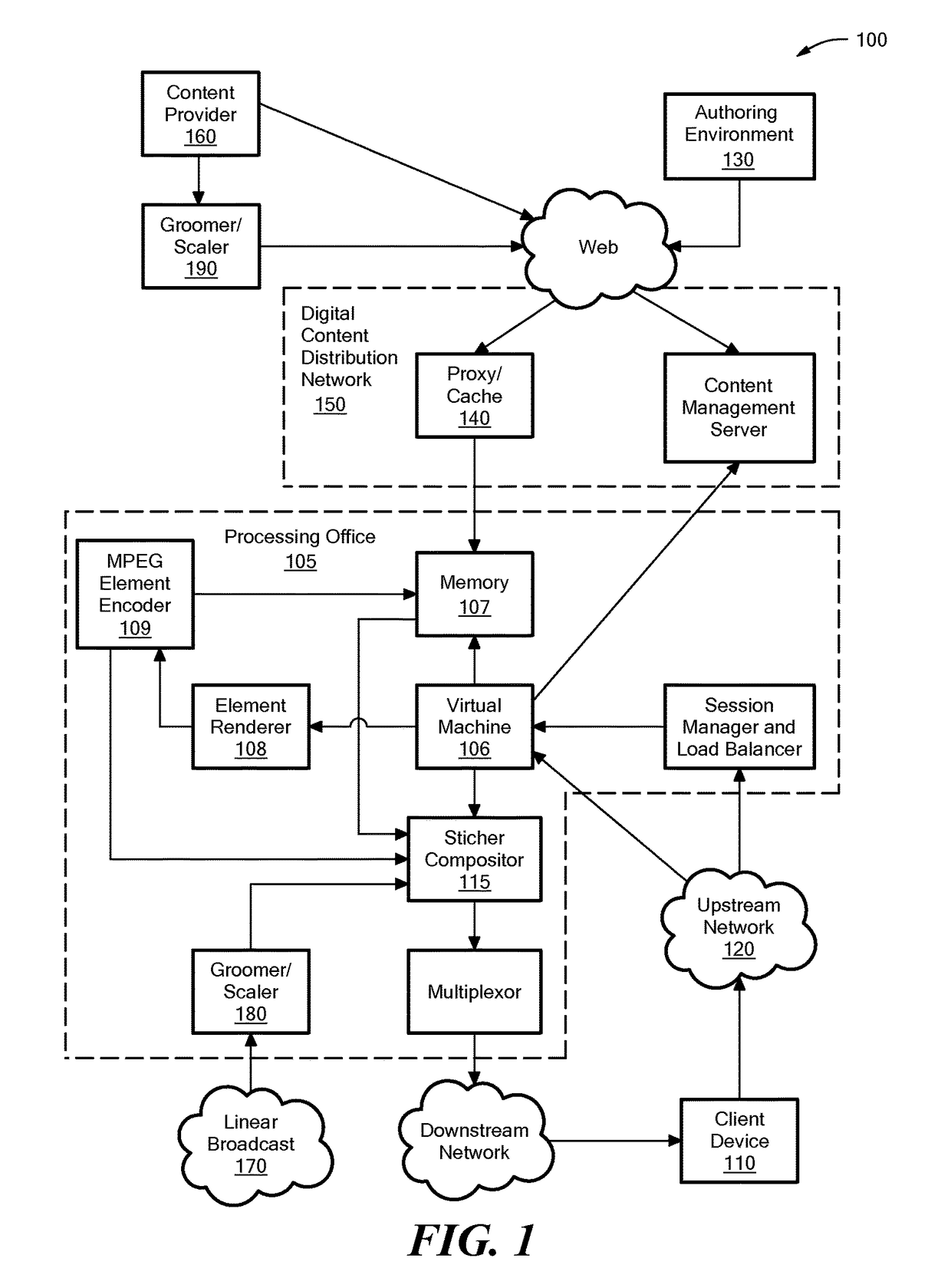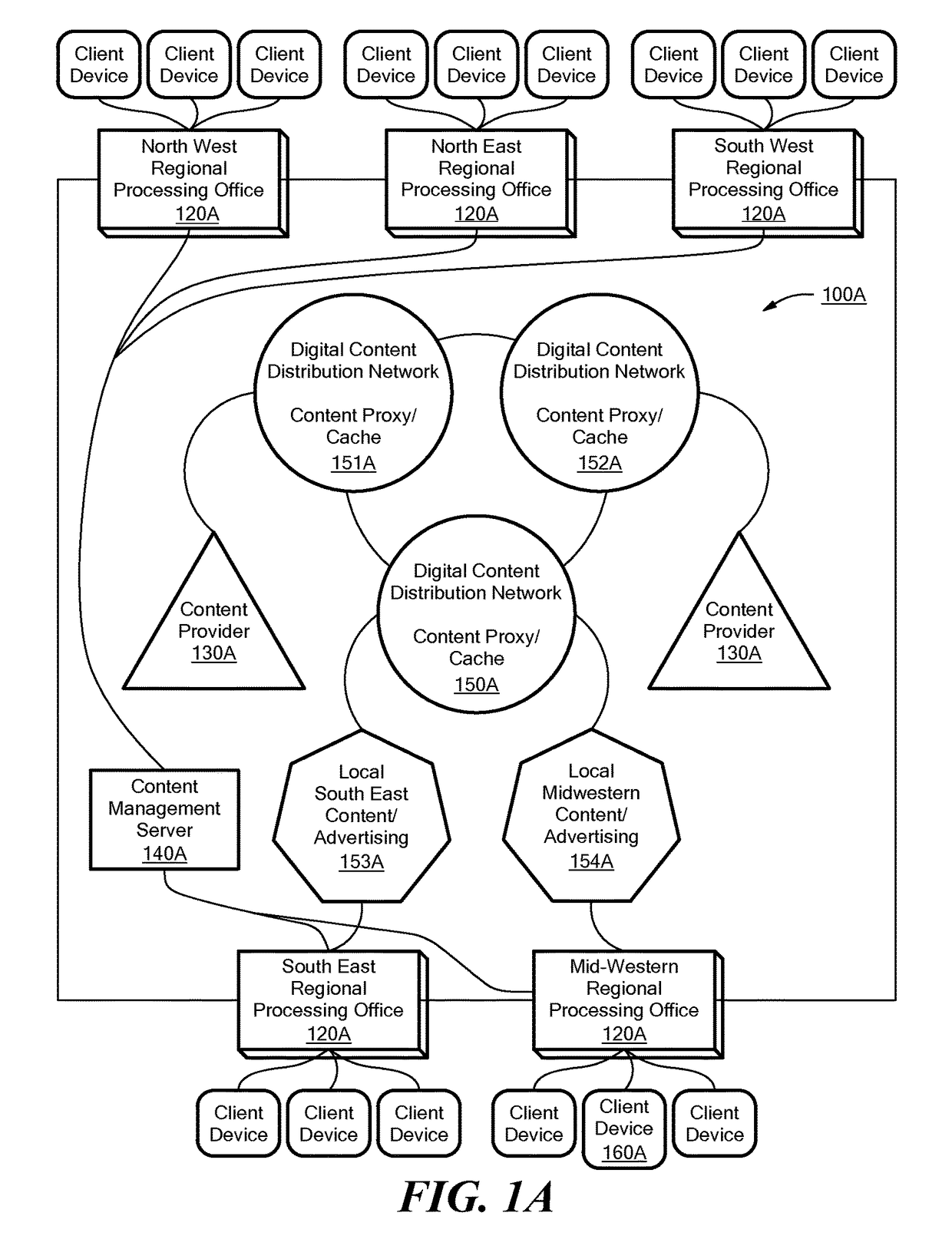Providing television broadcasts over a managed network and interactive content over an unmanaged network to a client device
a technology of managed network and interactive content, applied in the field of system and method for providing interactive content to a remote device, can solve the problems of reducing image quality, reducing the quality of experience of users, and reducing the cost of cable operators for users to operate in an interactive environment with dynamic web pages and other dynamic content, so as to achieve adaptive control of transmitted content and high experience quality
- Summary
- Abstract
- Description
- Claims
- Application Information
AI Technical Summary
Benefits of technology
Problems solved by technology
Method used
Image
Examples
Embodiment Construction
[0059]As used in the following detailed description and in the appended claims the term “region” shall mean a logical grouping of MPEG (Motion Picture Expert Group) slices that are either contiguous or non-contiguous. When the term MPEG is used it shall refer to all variants of the MPEG standard including MPEG-2 and MPEG-4. The present invention as described in the embodiments below provides an environment for interactive MPEG content and communications between a processing office and a client device having an associated display, such as a television. Although the present invention specifically references the MPEG specification and encoding, principles of the invention may be employed with other encoding techniques that are based upon block-based transforms. As used in the following specification and appended claims, the terms encode, encoded, and encoding shall refer to the process of compressing a digital data signal and formatting the compressed digital data signal to a protocol ...
PUM
 Login to View More
Login to View More Abstract
Description
Claims
Application Information
 Login to View More
Login to View More - R&D
- Intellectual Property
- Life Sciences
- Materials
- Tech Scout
- Unparalleled Data Quality
- Higher Quality Content
- 60% Fewer Hallucinations
Browse by: Latest US Patents, China's latest patents, Technical Efficacy Thesaurus, Application Domain, Technology Topic, Popular Technical Reports.
© 2025 PatSnap. All rights reserved.Legal|Privacy policy|Modern Slavery Act Transparency Statement|Sitemap|About US| Contact US: help@patsnap.com



